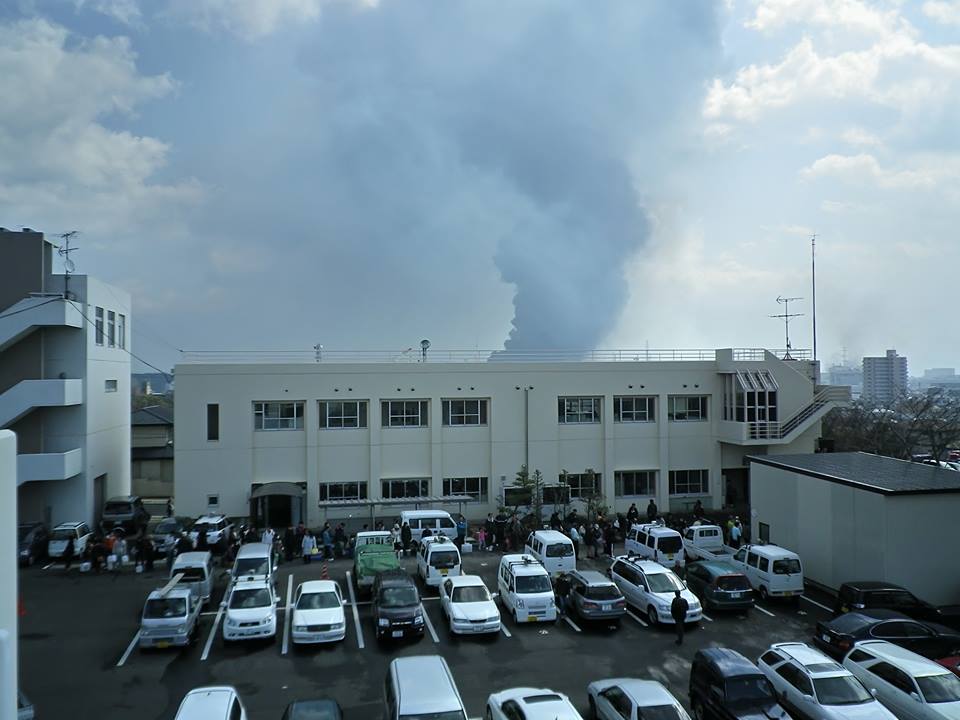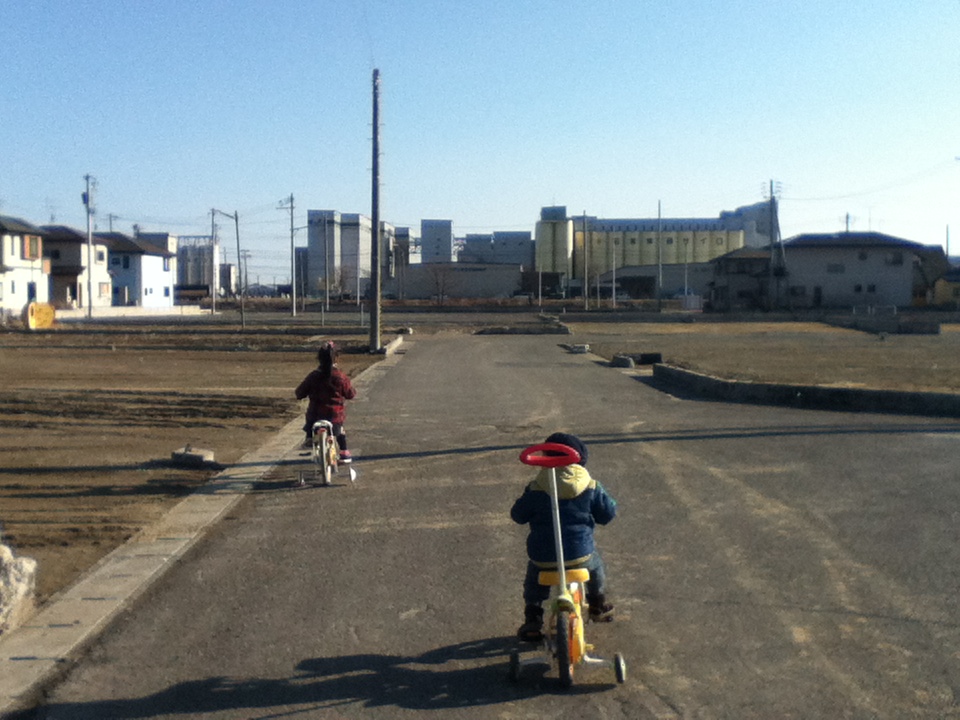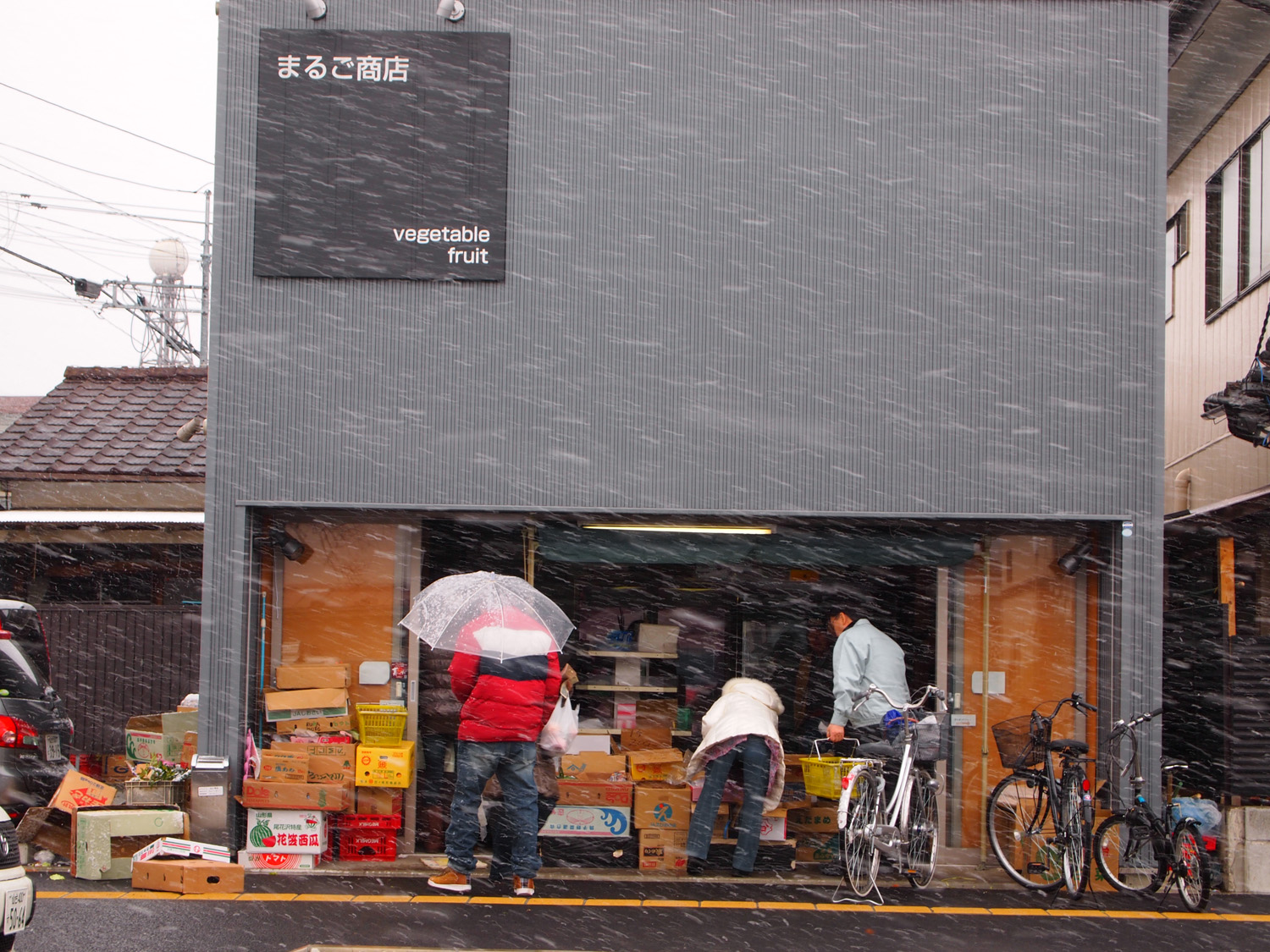I Knew I Should Take Pictures But I Don’t Recall Taking Any
March 11 Fixed-Point Observation Photo Archive Project Open Salon, at the Thinking Table, on April 30, 2013
This article was translated by Yiyang (Ian) ZHONG, Jamie DING, John CARLYLE, Julie EMORY, Jung hun CHEON, Kenzo STURM, Linnea PEARSON, McKenna STRICKER, Minnie THOMPSON, Rebecca LEVEQUE, Tyler FRAGIE, Cindy XU, and Yen-Han NGUYEN. This collaborative translation was part of an advanced Japanese language class at the University of Washington taught by Justin JESTY.
Narrator: ADACHI Chikako
Interviewer: SATŌ Masami (NPO 20th Century Archive Sendai)
■ My Home with Things in Disarray
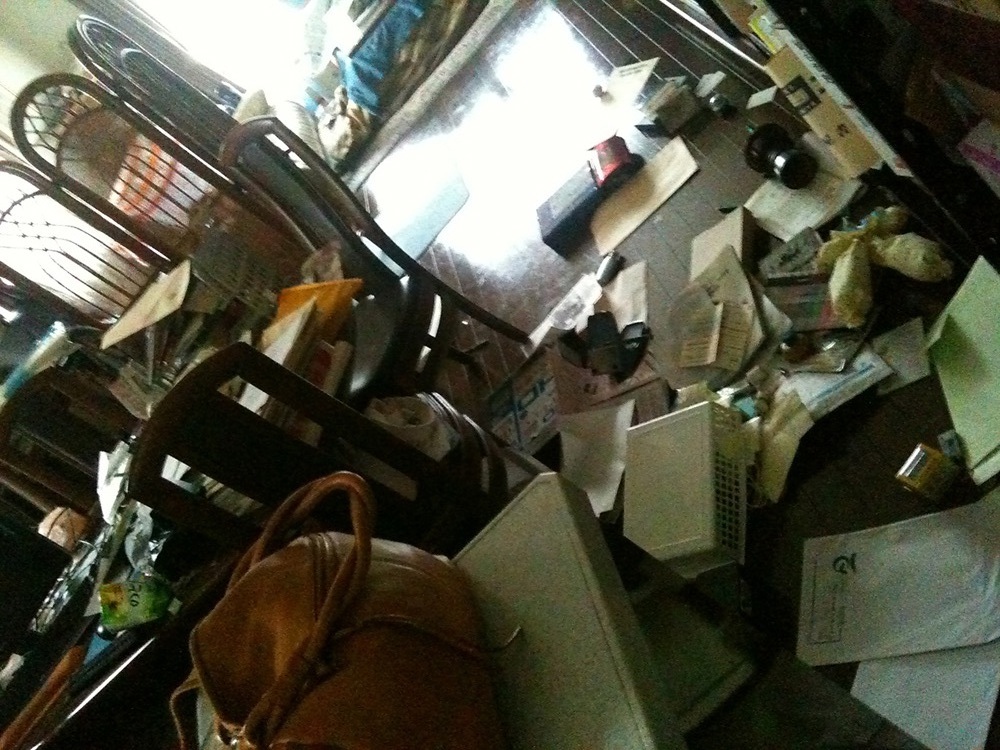
Photo caption: March 11, 2011, 2:56PM My home, Miyagino Ward, Sendai City
[ADACHI] Normally I'm hardly ever at home because I work in various different locations. On that day, though, I happened to have come back home in the morning. I was doing work, sending emails, and I was doing email right at 2:46. I had plans to go out for drinks after work that day and was aiming to head out around five. The earthquake hit right when I was thinking I should start getting ready to go. That's when my computer and everything fell down everywhere. This photo, well, I'm afraid I have no recollection of taking it.
[SATŌ] There were a few pictures like this. Of the first and second floors and such.
[ADACHI] I think maybe I got caught up in the moment and thought I needed to take pictures of everything. Later, when you told me that you were collecting photographs from people, I had forgotten ever taking any--I even told you I didn't have any photos. There were a ton saved in my iPhone. I think I'd forgotten about those too. Since I was working at home, this space had become my home office. Everything--work papers and everything--fell down and got mixed up. This is a picture I took when I was trying to figure out how I was going to tidy it all up.
■ Cooking Emergency Rice with my Hand-made Stove
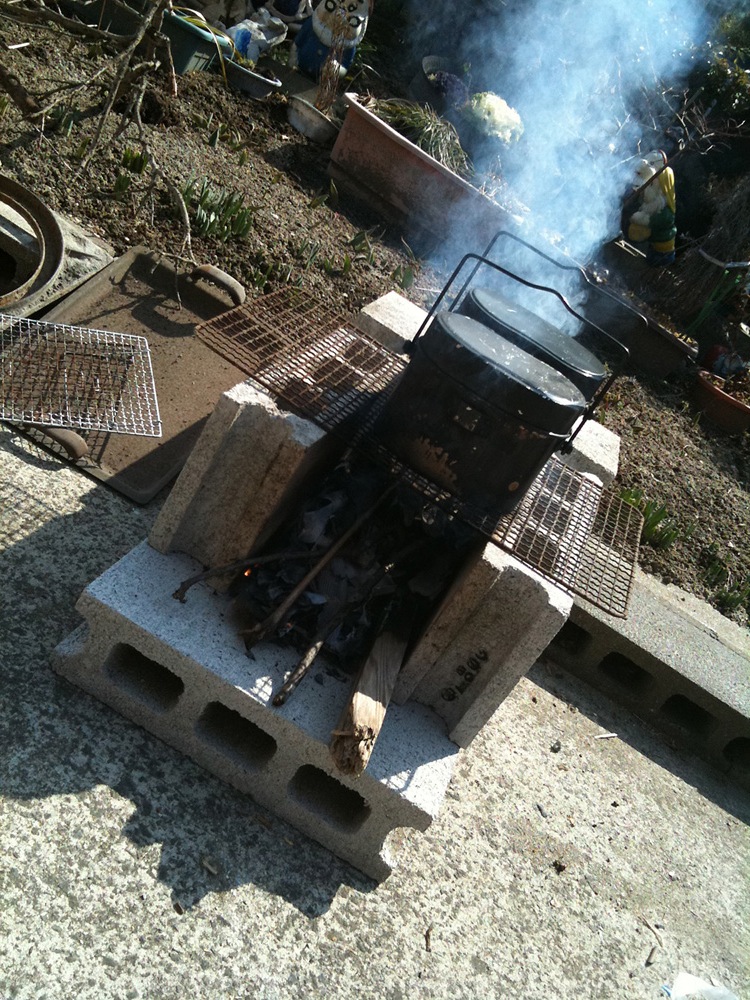
Photo caption: March 13, 2011 My home, Miyagino Ward, Sendai City
[ADACHI] I live in Iwakiri, but I didn’t know anything, even that there was an evacuation shelter there. Information just didn't come in. I didn't know there was a water-supply truck going around, or that Iwakiri's junior high school had been turned into an evacuation shelter. Essentially I had to take care of myself. Even if I went shopping the stores were closed, so in order to conserve as much as possible I went to the hills behind my house to gather firewood and used the cinder blocks in the flower garden to make a fire to cook rice. I led a survivalist lifestyle this way, I think for about a week. I’d go gather firewood in the morning, afternoon, and evening, and build a fire to cook rice and boil water and stuff. I think I probably took this picture thinking "Hey, I’m really doing this!"
[SATŌ] I wanted to ask about these blocks. I thought it was really lucky you had them at your house. So they were blocks for making flower beds.
■ The Cracked Sidewalk Along the Rifukaidō Highway (Route 8)
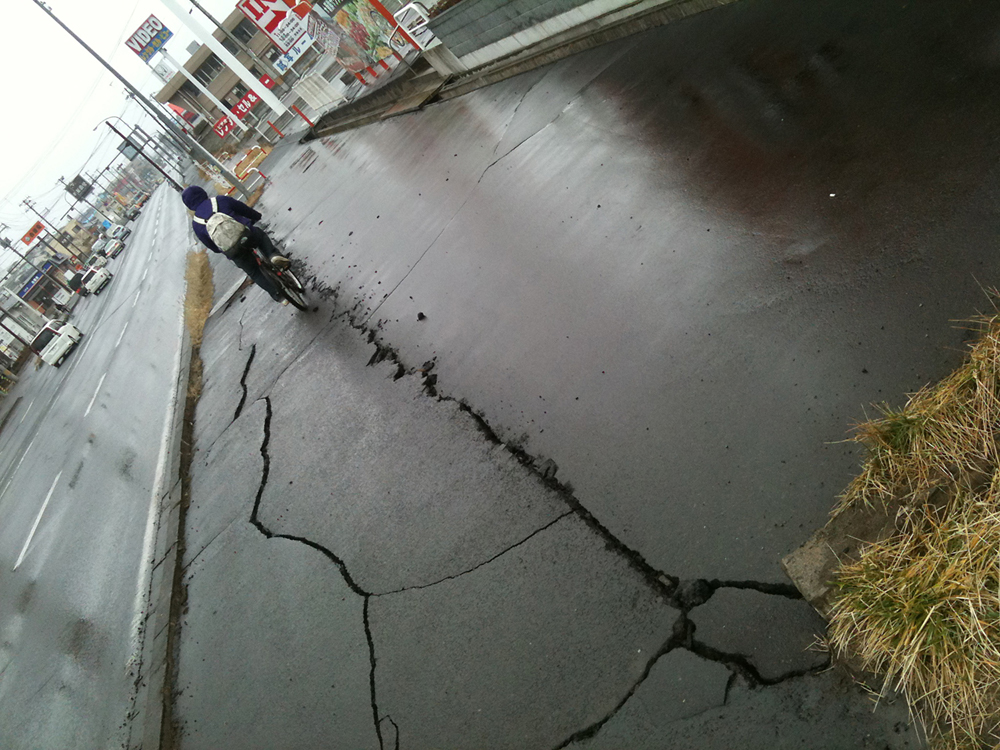
Photo caption: March 15, 2011 Rifukaidō Highway, Miyagino Ward, Sendai City
[ADACHI] The car didn't have any gas either so I think this was a picture I took when I was walking from Iwakiri to Higashi Sendai. I was worried about my daughter who lives in Higashi Sendai. I thought this big crack in the Rifukaidō Highway was just incredible. I took pictures around here and posted them on Twitter, of things like the fallen guardrail on the Iwakiri Bridge, and the way the power line poles on the Shinkansen tracks through the Rifu rice fields had all fallen inward like dominoes. I have a lot of friends who work as architectural consultants and they responded with all sorts of explanations on Twitter, like this or that force was involved so this must be what happened. So then I thought, well maybe I should get this stuff out there, and I kept taking pictures with the idea that people could make use of them if they wanted.
[SATŌ] Looking at it that way, putting things up on Twitter and seeing how people would interpret them was one way to relay information.
[ADACHI] That’s right. I took these ones with the idea that I wanted to inform a pretty specific group of colleagues, people in the construction industry and I thought those people would want to see the raw information.
■ I Get a ¥3,000 Gas Ration Ticket
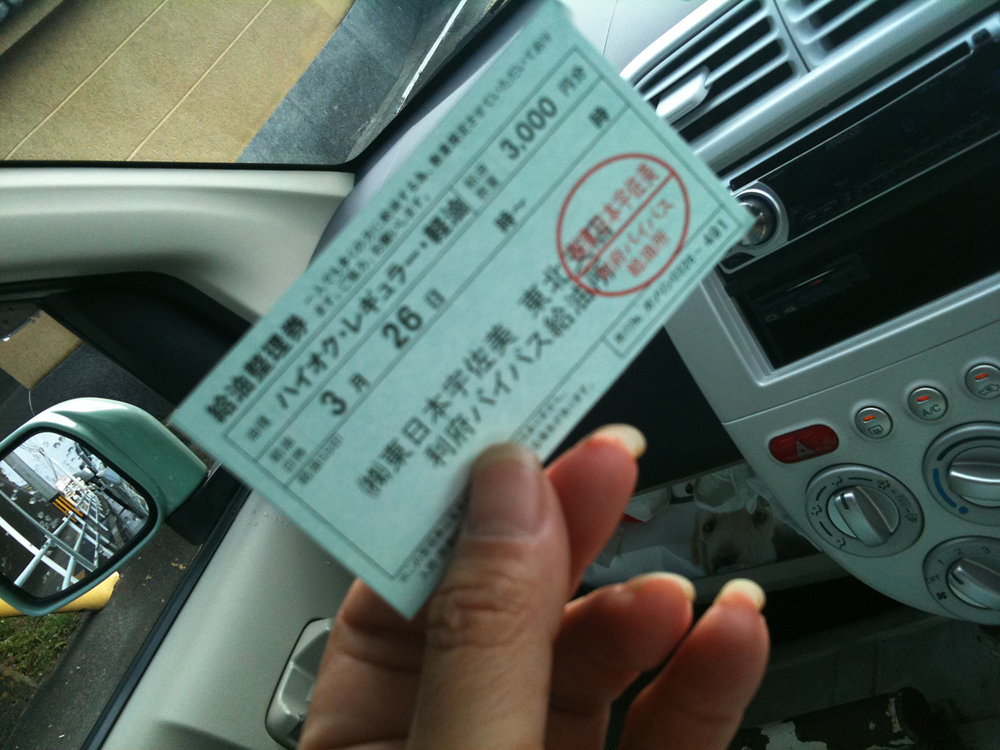
Photo caption: March 26, 2011 Rifu Town
[ADACHI] I think everyone probably experienced this, but you really couldn’t get gas at all. I couldn’t either. My daily routine would be hearing a rumor on Twitter like, “looks like this place is definitely getting gas," and going to line up there at like three or four in the morning. You'd get in line and turn off the engine and everyone brought lots of blankets because it was cold. People would be talking about whether they were really going to come that day and then around eight o'clock a signboard appears that says “No service today.” Or another time I waited half the day and got up to there being like ten cars left and someone says “emergency vehicles coming through” and twenty or thirty emergency vehicles come in and then they put out “Not servicing private vehicles.” I kept striking out like this for like ten days straight. But eventually I heard people were gradually starting to get in and I decided today's the day and went and lined up. That's when I got my first gas ration ticket and I thought, "yes! I did it!" I was really happy about it.
[SATŌ] Right at the end of March, right? It was the time when you really couldn't get gasoline. In other people's photographs there are a lot of pictures of bicycles--people biking around in the center of town--because you couldn't use your car. And that's right when you got your ticket. Were you able to get gas at that time?
[ADACHI] Yes, I was.
[SATŌ] Having gotten the ration ticket first.
[ADACHI] That's right. Once I got it, I was told to come back at a particular time. I think they probably had a system so that people with tickets would definitely get gas.
[SATŌ] I saw in the newspaper that there were sometimes incidents at gas stations, and I saw a bunch on Twitter and Facebook too. Was there any of that?
[ADACHI] Yes, there was. When you're in a line long enough, a friendship, or a certain feeling of solidarity develops among the people in line. Then if a person comes and cuts in from a side street or something everyone stops them together. People would try to take off and leave their cars unattended too. Then we'd all try to persuade them, “you can’t just leave it there!” The people who got into line early in the morning usually organized the way the line was laid out and if they did a good job everything was hunky dory. But if things weren't clear it could really set people off and, yeah, anything can happen. That's how I felt, having lined up over and over again with nothing to show for it, but then this day I got gas for the first time.
* This article is based on the contents of ADACHI Chikako’s talk at the “March 11 Fixed-Point Observation Photo Archive Project Open Salon ‘Continuing to Watch, the Scenes from that Day,’” held at Sendai Mediatheque’s Thinking Table on April 30, 2013.
[March 11 Fixed-Point Observation Photo Archive Project]
This project archives citizens' documentation of the circumstances right after the disaster, and the circumstances of the subsequent reconstruction and recovery through periodic fixed point observation in the cities and towns of Miyagi Prefecture that were affected by the Great East Japan Earthquake, in order to leave them to posterity. We continue to gather documentarists from among the citizens, and periodically host spaces for information exchange and other activities in the form of Open Salon. These fixed point observation photos are stored and published in both the 20th Century Archive Sendai and the center for remembering 3.11(sendai mediatheque), as a part of “Records of the Great East Japan Earthquake -Citizens’ Collaboration Archive”.
website: http://www.20thcas.or.jp/
[Thinking Table]
The Thinking Table is our name for a space where people can get together and share stories, and think about disaster recovery, the regional community, and expressive activities. It is held in the studio on the 7th floor of Sendai Mediatheque. There are a variety of events including talks, public meetings, and activity reports by citizen groups.
| Recorded on | March 11-26, 2011 | |
|---|---|---|
| Recorded by | ADACHI Chikako | |
| Recorded at | Miyagino Ward , Sendai, Miyagi | |
| Series | ||
| Keywords |








